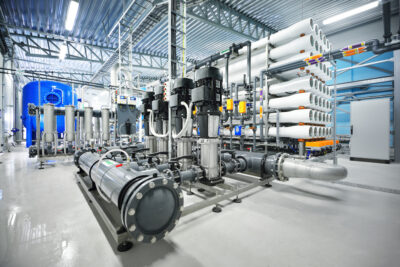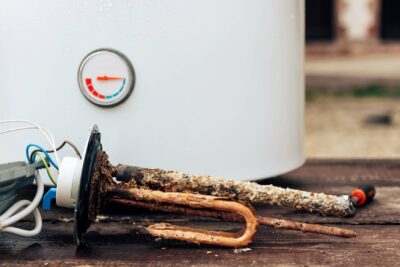Sediment Traps: Design, Function, and Applications
Introduction
Sediment traps are essential tools in environmental management, designed to capture and retain sediment from water before it reaches downstream areas. By effectively managing sediment, these traps help prevent erosion, protect water quality, and preserve aquatic habitats. This article delves into the design and function of sediment traps, their various applications, and the benefits they offer in controlling sedimentation.
What is a Sediment Trap?
A sediment trap is a structural or engineered feature designed to capture and hold sediment-laden water. It operates by slowing down the flow of water, allowing sediment particles to settle out of the water column and accumulate in the trap. Sediment traps can vary in size and design, from simple devices used in small-scale projects to complex systems employed in large-scale engineering works.
Design and Function
Sediment traps are designed to achieve several key functions:
- Sediment Capture: The primary goal of a sediment trap is to capture sediment from runoff or other water sources. By reducing the velocity of water and allowing it to spread out, sediment traps provide a space where particles can settle.
- Flow Control: Sediment traps often include features to control water flow, such as inflow and outflow structures. These elements are designed to direct the water into the trap and manage the rate at which water exits, ensuring that sediment has sufficient time to settle.
- Maintenance Access: Effective sediment traps are designed with accessibility in mind. They often include features such as access points or removable sections to facilitate sediment removal and maintenance.
Types of Sediment Traps
Several types of sediment traps are used depending on the specific needs of a project and the characteristics of the site:
- Silt Fences
- Description: Silt fences are barriers made from geotextile fabric that trap sediment while allowing water to pass through.
- Use: They are typically used on construction sites or along riverbanks to capture sediment from disturbed areas. Silt fences are effective for small-scale sediment control but may require regular maintenance to remain effective.
- Sediment Basins
- Description: Sediment basins are larger, more permanent structures that capture and store sediment from runoff.
- Use: These basins are used in larger construction sites or areas with significant runoff. They are designed to handle larger volumes of water and sediment and may include features like weirs and sediment removal systems.
- Sediment Ponds
- Description: Sediment ponds are designed to provide temporary storage for sediment-laden water before it is discharged.
- Use: Often used in combination with other erosion control measures, sediment ponds help to manage runoff from large areas, such as agricultural fields or mining sites.
- Inlet Sediment Traps
- Description: These are placed at the inlets of stormwater systems to capture sediment before it enters the main drainage system.
- Use: They are commonly used in urban areas and industrial sites to prevent sediment from clogging stormwater drains and contributing to downstream pollution.
Applications of Sediment Traps
Sediment traps are used in various contexts to manage sediment and prevent environmental damage:
- Construction Sites
- Purpose: During construction, soil disturbance can lead to increased sediment runoff. Sediment traps help manage this runoff and protect nearby water bodies from sediment pollution.
- Implementation: Temporary sediment traps such as silt fences and sediment basins are commonly employed to control sediment during different phases of construction.
- Agricultural Areas
- Purpose: Agricultural activities can contribute significant amounts of sediment to waterways through erosion and runoff. Sediment traps help mitigate this impact.
- Implementation: Sediment ponds and basins are often used in agricultural settings to manage runoff from fields and prevent sediment from reaching streams and rivers.
- Urban Areas
- Purpose: In urban areas, sediment can enter stormwater systems and affect water quality. Sediment traps help manage this issue.
- Implementation: Inlet sediment traps and sediment basins are used in urban stormwater management systems to capture sediment before it enters larger water bodies.
- Mining and Quarrying
- Purpose: Mining and quarrying operations can produce large amounts of sediment. Sediment traps are used to manage this sediment and protect surrounding environments.
- Implementation: Large sediment basins and ponds are typically used in mining operations to handle substantial volumes of sediment-laden water.
Benefits of Using Sediment Traps
- Erosion Control: By capturing sediment, sediment traps help reduce soil erosion and prevent loss of valuable topsoil.
- Water Quality Protection: Sediment traps improve water quality by removing suspended particles that can carry pollutants and nutrients.
- Habitat Preservation: Effective sediment control helps protect aquatic habitats by preventing sediment from smothering aquatic plants and disrupting fish spawning areas.
- Regulatory Compliance: Using sediment traps helps meet environmental regulations and standards aimed at controlling sediment pollution.
Maintenance and Best Practices
To ensure the effectiveness of sediment traps, regular maintenance and adherence to best practices are essential:
- Regular Inspection: Sediment traps should be inspected frequently to ensure they are functioning properly and to identify any issues, such as sediment accumulation or damage.
- Timely Sediment Removal: Sediment should be removed from the trap before it reaches capacity to maintain effectiveness and prevent overflow.
- Proper Design and Installation: Sediment traps should be designed and installed according to site-specific conditions and regulations to ensure optimal performance.
- Integration with Other Controls: Sediment traps should be used in conjunction with other erosion and sediment control measures for comprehensive sediment management.
Conclusion
Sediment traps play a crucial role in managing sediment and protecting environmental quality. By capturing and retaining sediment-laden water, these devices help prevent erosion, protect water quality, and preserve aquatic habitats. Understanding the various types of sediment traps, their applications, and maintenance requirements can help ensure their effective use in a variety of settings. Implementing sediment traps as part of a broader sediment management strategy contributes to sustainable environmental practices and regulatory compliance.







